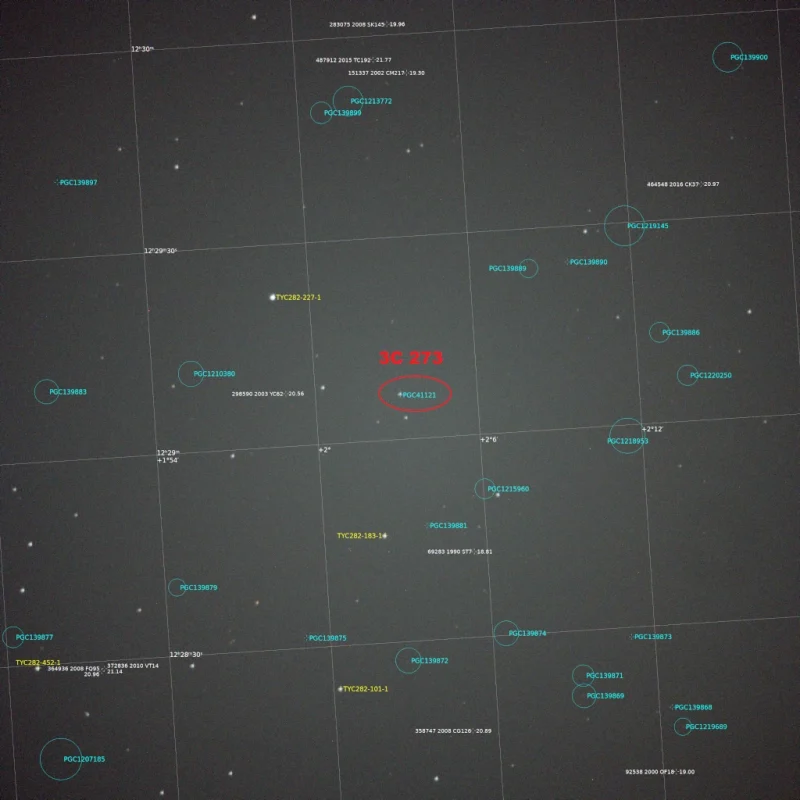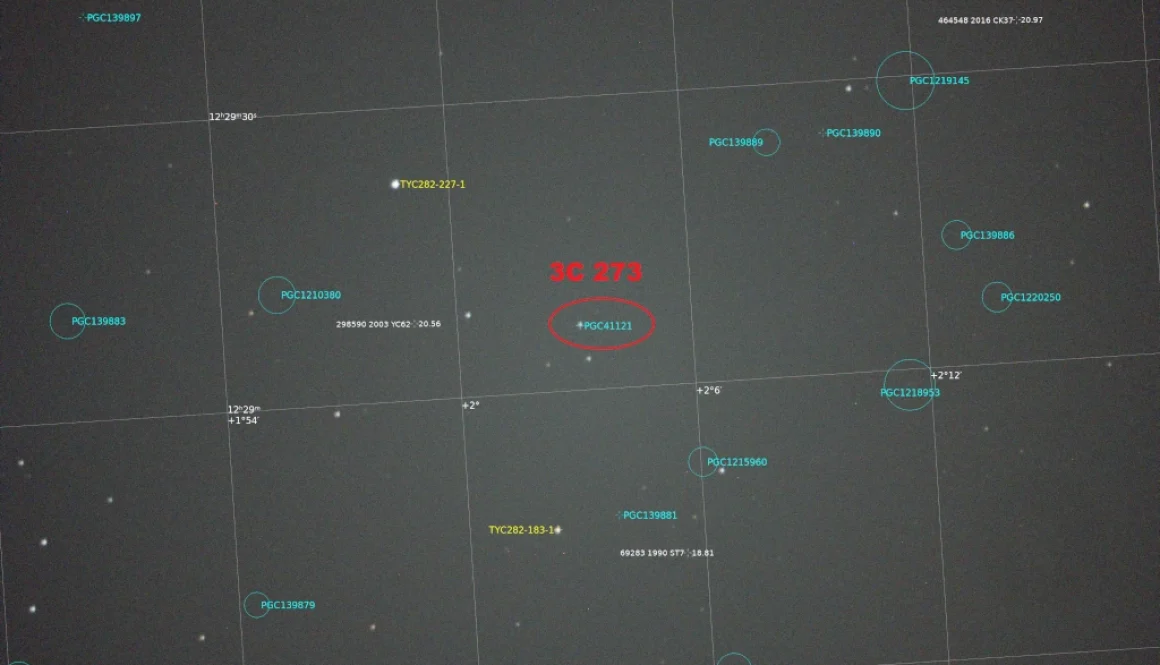I photographed a distant quasar!
I photographed a distant quasar!
The weather forecast for the night of March 29, 2022 was good and temperature was not too cold (about -3°C, with no wind), although seeing wasn’t exceptional. I decided to setup my C8 SCT to start imaging some galaxies and to test the performance of my Celestron AVX mount. By 9pm (EDT) everything was ready and polar aligned and I started imaging for the galaxy season. I took images of the Bode Galaxy (Messier 81), the Whirlpool Galaxy (Messier 51), the Pinwheel Galaxy (Messier 101), Messier 106 and NGC 2841.
Before completing the observing session from my deck, I decided to try shooting an object called 3C 273, which is the first quasar ever discovered as well as one of the brightest quasars known.
From Wikipedia: “A quasar is an extremely luminous active galactic nucleus (AGN), powered by a supermassive black hole” (source: https://en.wikipedia.org/wiki/Quasar). “Quasar” is an abbreviation of the phrase “quasi-stellar radio source”. They are powerful centers of very distant and active galaxies, powered by a huge disc of particles surrounding a supermassive black hole.
3C 273 was discovered in the early 1960s by Allan Sandage, an american astronomer.
In 1963 the German astronomer Maarten Schmidt, from Mount Palomar observatory, demonstrated that 3C 273 was moving away from us at a speed of 44,000 km/s.
At the time, 3C 273 was the farthest and brightest object ever observed. It is also the brightest quasar (apparent magnitude 13). 3C 273 is so bright that, if it was located just 30 light-years from our own planet, it would appear as bright as the sun in the sky! Its distance, calculated from its redshift (0.158) is estimated to be 1.9 billion light-years (580 megaparsecs)!
I obtained this image with my Celestron 8 SCT, ZWO ASI533 MC PRO camera, a light pollution filter (Optolong L-Pro), NINA and PixInsight.
How did I get this image
I pointed the telescope to the quasar through NINA, plate solved the image, took 3 exposures of 3 minutes, stacked them together and used PixInsight for the star annotation. PGC41121 is another designation for 3C 273 (where PGC stands for Catalogue of Principal Galaxies).
The quasar 3C 273!
Scope: Celestron 8 SCT
Mount: Celestron AVX
Camera: ASI533MC PRO (cooled at -10°C)
Filter: Optolong L-Pro (light pollution filter)
Focuser: Celestron Focus Motor
Guide Scope: Orion 50mm mini + ASI224MC, PHD2
Software: NINA, PixInsight, GIMP
Total integration time: 9 minutes (3×180 secs., dark, flat, bias)

